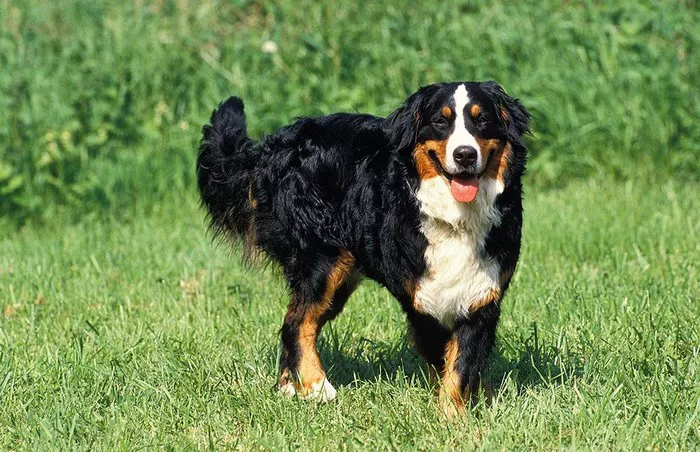Bernese Mountain Dogs are beloved for their gentle nature, loyalty, and striking tricolor coats. As responsible owners, deciding when to neuter your Bernese Mountain Dog is a critical step in ensuring their long-term health and well-being. This guide explores the optimal timing for neutering, breed-specific considerations, and the balance between benefits and potential risks.
Why Neutering Matters for Bernese Mountain Dogs
Neutering—a surgical procedure to remove reproductive organs—is a common practice with far-reaching benefits:
Population Control: Prevents unwanted litters, reducing shelter overcrowding.
Health Protection: Lowers risks of testicular cancer (males) and uterine infections (females).
Behavior Management: Minimizes roaming, marking, and aggression driven by hormonal instincts.
However, timing is crucial. Early or late neutering can affect growth, joint health, and disease susceptibility, particularly in large breeds like Bernese Mountain Dogs.
Factors Influencing Neutering Timing
Age and Development
Traditional Recommendations: Historically, neutering at 6–9 months was standard. This aligns with sexual maturity in smaller breeds.
Modern Guidelines: Recent studies suggest delaying neutering until 1–2 years for large breeds like Bernese Mountain Dogs. This allows skeletal growth plates to close fully, reducing orthopedic issues like hip dysplasia.
Gender-Specific Considerations
Male Bernese Mountain Dogs: Neutering before 2 years may increase joint problems (e.g., cruciate ligament injuries). Waiting until 2 years balances health risks and behavioral benefits.
Female Bernese Mountain Dogs: Spaying before the first heat cycle (4–6 months) reduces mammary cancer risk. However, some studies link early spaying to urinary incontinence.
Health History
Dogs with hereditary conditions like hip dysplasia may benefit from delayed neutering to monitor growth.
Consult your veterinarian to assess individual risks, especially for Bernese Mountain Dogs prone to cancers and joint disorders.
Risks of Early Neutering
Neutering before 1 year in males is associated with:
Increased Joint Disorders: Higher likelihood of hip and elbow dysplasia.
Hormonal Imbalances: May affect muscle development and metabolism.
Behavioral Challenges: Early neutering might not fully prevent territorial marking or aggression.
Risks of Delayed Neutering
Waiting beyond 2 years increases risks like:
Testicular Cancer: Unneutered males face a 90% higher risk.
Unwanted Pregnancies: Females can become pregnant as early as 6 months.
Aggression: Hormonal-driven behaviors may persist.
Balancing Benefits and Risks
For Bernese Mountain Dogs
Ideal Timing for Males: 18–24 months to protect joint health while addressing behavioral issues.
Ideal Timing for Females: 12–18 months (post-first heat) to minimize cancer risks and incontinence.
Always discuss timing with your veterinarian, considering your dog’s activity level, health, and lifestyle.
Preparing for Neutering Surgery
Pre-Op Care
Health Check: Ensure your dog is free of infections or illnesses.
Fasting: Follow vet instructions to avoid complications during anesthesia.
Post-Op Recovery
Restricted Activity: Prevent jumping or running for 10–14 days.
Wound Care: Monitor incisions for redness or discharge.
Pain Management: Administer prescribed medications.
Long-Term Care After Neutering
Diet Adjustments: Reduce calorie intake to prevent weight gain.
Exercise Routine: Maintain regular walks and play to support joint health.
Health Monitoring: Schedule annual checkups to screen for age-related conditions.
Myths vs. Facts
Myth: “Neutering changes a dog’s personality.”
Fact: It reduces hormonal behaviors but doesn’t alter temperament.
Myth: “Large breeds should never be neutered.”
Fact: Delayed neutering balances risks and benefits.
Conclusion
Neutering your Bernese Mountain Dog is a vital decision, best made in collaboration with your veterinarian. While males benefit from waiting until 2 years to protect joints, females thrive when spayed post-first heat. By prioritizing timing, you’ll enhance your dog’s quality of life and reduce health risks.
Related Topics:
ARE FEMALE BERNESE MOUNTAIN DOGS AGGRESSIVE?
HOW TO TRAIN YOUR BERNESE MOUNTAIN DOG
WHY WAS THE BERNESE MOUNTAIN DOG BRED?


